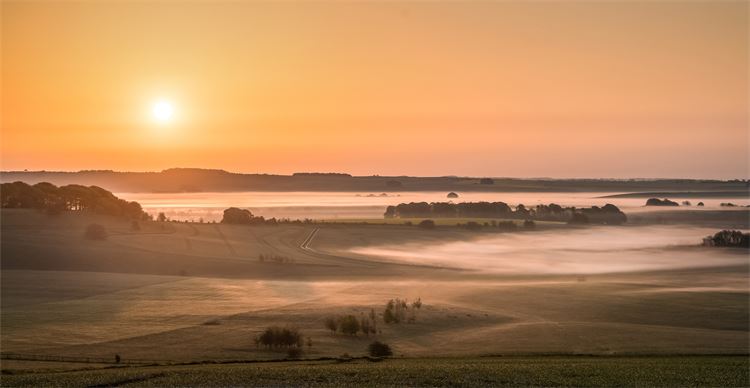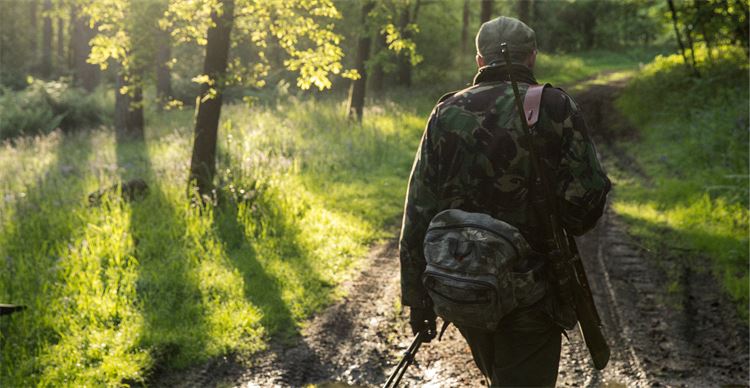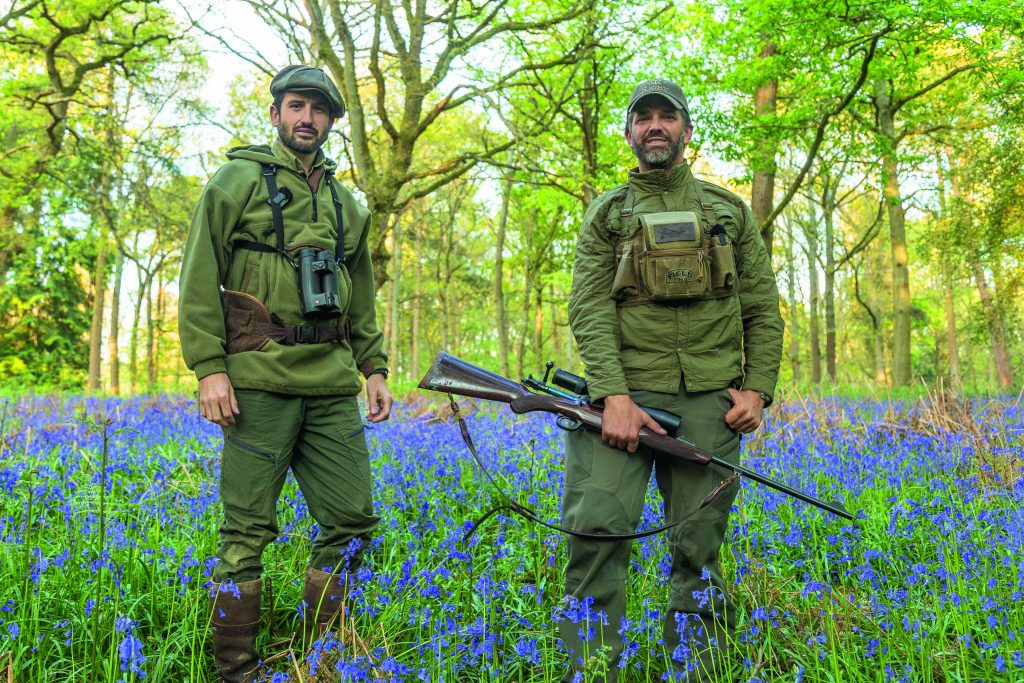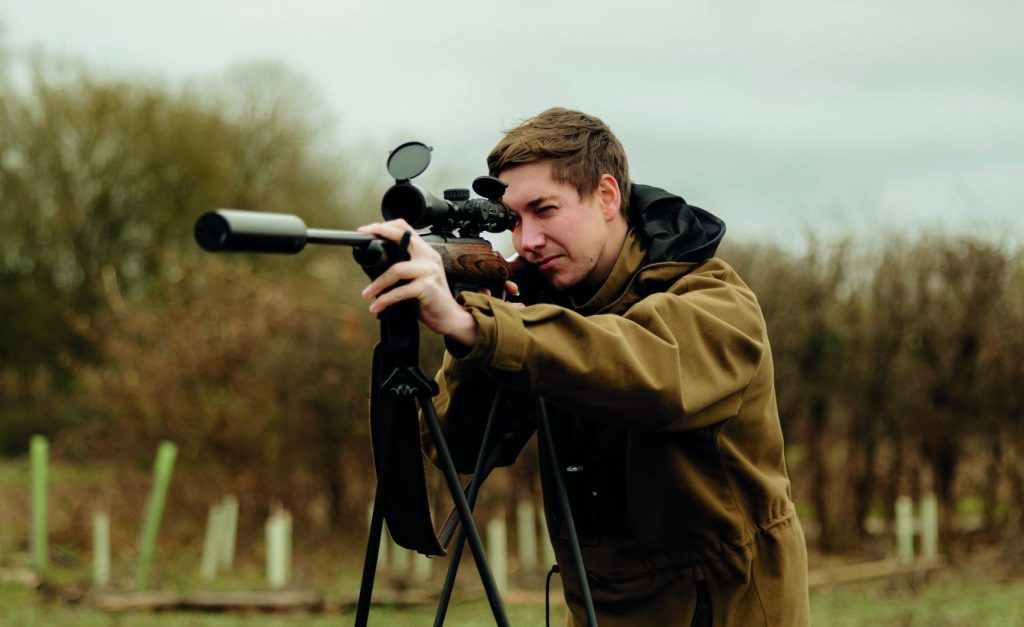Spring roebuck stalking
As the days lengthen, an all-consuming desire to stalk Capreolus capreolus is triggered explains Anthony ‘Trigger’ Alborough-Tregear.
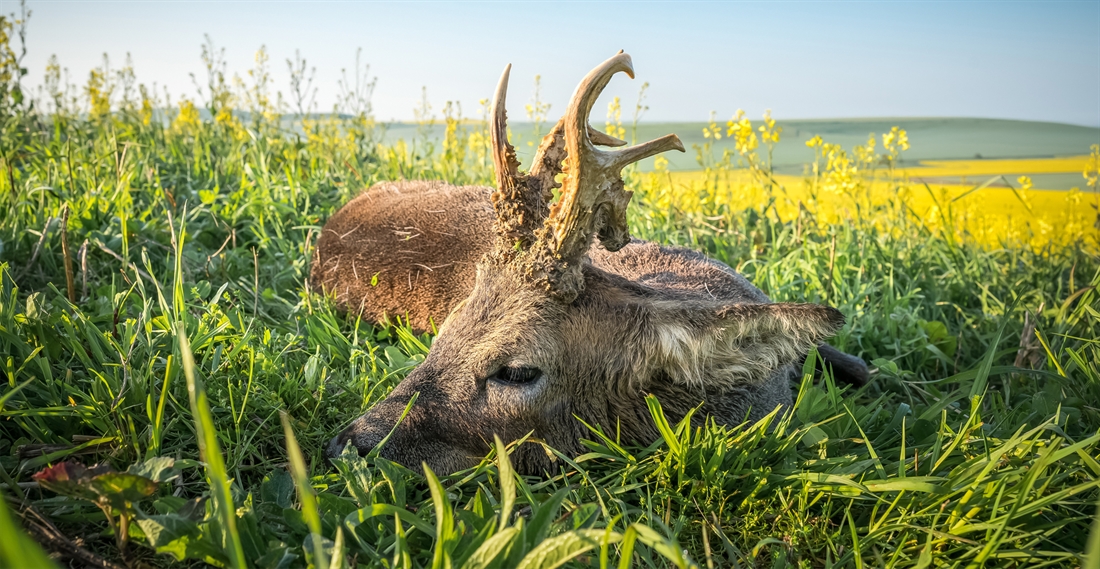
For many an avid deer stalker spring is defined by the opening of the roebuck season on 1 April. The game shooting season now seems but a distant memory, as the grey, brown foliage of the hedgerows and woods slowly comes to life with the gentle growth of new buds and leaves. The kaah of the rook once again fills the air with a renewed excitement as the British countryside literally ‘springs’ to life. The gradually lengthening days trigger for many of us sporting souls an all-consuming desire to stalk the prince of deer.
Whilst the native roe (Capreolus capreolus) may be a creature of shy nature and diminutive size compared to our other native deer, the red (Cervus elaphus) the outright passion and dedication to his pursuit shown by stalkers both here in the UK and on the Continent, places him in an unprecedented position as one of the top deer species to stalk.
In the UK we are privileged to have some of the finest trophy roe found anywhere in Europe with many great trophies measured to CIC (Conseil International de la Chasse) medal standard every year. Whilst trophies help make up the income of professional deer managers, for many of us recreational stalkers, roe stalking is not about trophies, it is about the environment in which the roe live and the real challenge of outwitting an intelligent, alert and at times very crafty adversary. Trophies, in truth, come as a by-product of careful management of both bucks and does, developed over many years, taking stock of the deer found on a particular piece of ground. From a personal perspective it is this ‘ground’ that contributes so much to the actual stalking itself.
Roe now populate a significant portion of the United Kingdom, from northern Scotland to the tip of Cornwall. Within this broad swathe lie a variety of habitats, ranging from open heather moorland with thick coniferous plantations, to large tracts of arable farmland interspersed with traditional broadleaf woodland and copses. Roe not only survive but thrive in these habitats and having stalked them in many of habitat types, each can truly be said to bring its own set of stalking challenges.
The ground where I regularly stalk is a traditional English estate with old broadleaf woodland, a smattering of coniferous trees, thick hedgerows, a small amount of arable, livestock husbandry and a driven game shoot. The whole estate can be traversed under wooded cover, which sportingly gives the roe an edge as you never quite know were a non-territorial buck might pop up – or not as the case may be. Cover can be very thick which means that actual stalks are slow and meticulous, paying careful attention to every movement and swirl of the breeze. Shots are usually taken under 90 yards and whilst considered, must be swift as the roe can vanish into cover in an instant.
By comparison, the large open arable fields and downs of Wiltshire present a long-range visual, requiring skilfully planned stalks, especially early in the season. Roe in this habitat can be found in the crops, along hedgerows or more often out in the middle of large fields. Shots on the whole are at greater range, although the stalker often has the advantage of undisturbed deer. A long detour may be necessary to bring the stalker into shot of the deer using the contours of the ground as cover. The early morning spring sun can also be an aid, particularly if the wind is in the stalker’s favour, allowing for direct stalks on hands and knees – not for the faint of heart!
It is with his own ground in mind that many roe stalkers have already been taking stock of bucks during the last weeks of March, grasping a good knowledge of where the deer are and how heads might be developing. The leafless nature of March provides ample opportunity to view roe at a distance and leave certain bucks undisturbed in anticipation of the actual season opening.
It is worth noting at this point that the condition of the actual antlers leading into the season may influence a recreational stalker’s decision to take a particular buck, subject of course to the buck being part of his cull plan. Typically the more mature bucks will have frayed the velvet from their antlers by late March, so that by the season’s opening in April, they could, should a stalker wish, be taken. The problem with this is that the antlers may not have developed much colour and often have velvet around the tops of, and between the coronets, as well as up the rear of the antlers. This lack of colour can in the case of measurable trophies have a negative impact on the final score. Whilst obviously a conscious decision for the individual stalker, I have always preferred to leave any trophy quality roe until they colour up, usually into May as it adds so much to the beauty of the head. This requires great nerve and patience as we always live in the belief that we won’t see that buck again!
Mature bucks are likely to return to the same territories year on year and begin subtly marking territories at this time. These mature bucks will have pushed others out from these favoured areas where food and shelter may be in greater abundance. If habitat permits, the bucks which have been forced out will find their own territories. Yearlings, which should make up a good portion of the annual buck cull, can often be found wandering from area to area, always on the alert as a trespasser.
April as a month for roe stalking is a varied one. Opening day, on the first day of the month, can certainly live up to its name ‘All Fools Day’. Whilst we are all so eager to be out before dawn and back after dark, the British weather at this time of year can be discouraging, to say the least. Known traditionally as the month of showers, cold winds, and low temperatures, with a burst of sunlight April can be as productive as it can be frustrating, especially if your stalking is limited mainly to weekends.
The protracted dark, wet and cold spell in April 2018 made the early season cull of young bucks in some localities particularly difficult. Vegetation on woodland edges that in previous years had drawn roving bucks out remained almost dormant, considerably reducing deer encounters. In previous years the more stable weather, sunshine and plant growth had resulted in a consistent cull of bucks.
If April is a month of mixed fortunes, then May can be considered one of the golden months for early season roebuck stalking. The air temperature has warmed, sunlight hours have increased, showers have become less frequent, vegetation is in rapid growth and all roe now become far more visible. Mature bucks that have casually marked out their territories in March/April now become far more aggressive, chasing rival bucks off from all quarters. Luckily for the stalker this increased visibility and pre-occupation leads to the downfall of many a buck.
It is not unusual at this time to see a buck never seen before – one that may have moved in from neighbouring ground having been pushed out by a territorial buck there.
Amidst all the excitement of this increased activity, remember ‘you can only shoot them once’, so promising bucks which have long-term potential should be left so that their genes can be passed on to new generations. With luck and knowledge, you’ll get a chance at him years from now when he has passed his prime and still presents a fabulous trophy.
As we enter June, weather conditions may have improved, but so has the undergrowth in which the roe seek cover. Whilst opportunities from high seats now become the norm, minds are already turning to the prospects of the ‘rut’. Late July/early August is unquestionably one of the most anticipated and exciting periods in the roe stalkers calendar…
Related Articles
Get the latest news delivered direct to your door
Subscribe to Fieldsports Journal
Elevate your experience in the field with a subscription to Fieldsports Journal, the premium publication for passionate country sports enthusiasts. This bi-monthly journal delivers unparalleled coverage of game shooting, fishing and big game across the UK and beyond.
Each issue offers a stunning collection of in-depth features, expert opinions and world-class photography, all presented in a timeless yet contemporary design.
Save 10% on shop price when you subscribe, with a choice of packages that work for you. Choose from Print & Digital or Digital only with each journal delivered directly to your door or via the app every other month, plus access to past issues with the digital back issue library.






